Blog
It's Time for Beautiful Feet
Safeguarding Against Diabetes-Related Amputations

Diabetes-related amputations pose a grave threat to individuals grappling with this chronic condition, but preventive measures can help to reduce this risk. Consistent blood sugar management is essential, and maintaining target levels through a balanced diet, regular exercise, and medication adherence can significantly reduce the likelihood of complications. Routine foot care is equally as vital, as inspecting feet daily for cuts, blisters, or infections and promptly treating any abnormalities can prevent minor issues from escalating. Wearing well-fitted shoes and socks can safeguard against pressure sores and friction-related injuries. Avoiding barefoot walking minimizes exposure to potential hazards. Regular visits to a podiatrist for foot examinations and professional care are imperative for early detection and intervention. Additionally, prioritizing cardiovascular health by managing blood pressure and cholesterol levels aids in preserving overall vascular function, reducing the risk of peripheral artery disease and subsequent amputations. By implementing these preventive strategies, individuals with diabetes can safeguard their feet and minimize the threat of amputations. If you have diabetes, it is strongly suggested that you are under the care of a podiatrist who can present you with additional information about protecting your feet from amputation.
Diabetic Limb Salvage
Diabetic limb salvage can be an effective way in preventing the need for limb amputation. If you have a foot ulcer and diabetes, consult with one of our podiatrists from The Podiatry Center, PC. Our doctors will assess your condition and provide you with quality foot and ankle treatment.
What Is Diabetic Limb Salvage?
Diabetic limb salvage is the attempt of saving a limb, such as the foot, that has an infected ulcer, from amputation. Podiatrists also try to make sure that there is enough function in the foot after the salvage that it is still usable. Those with diabetes experience poor blood circulation, which prevents proper healing of an ulcer. If the ulcer is left uncheck, it could become infected, which could result in the need for amputation.
Diabetes is the number one cause of non-traumatic amputations in the United States. Amputation has been found to lead to higher mortality rates. This translates into higher healthcare costs, and a reduced quality of life and mobility for amputees. Podiatrists have attempted to increase the prevalence of limb salvage in an attempt to solve these issues.
Diagnosis and Treatment
Limb salvage teams have grown in recent years that utilize a number of different treatments to save the infected limb. This includes podiatrists that specialize in wound care, rehabilitation, orthotics, and surgery. Through a combination of these methods, limb salvage has been found to be an effective treatment for infected limbs, and as an alternative to amputation. Podiatrists will first evaluate the potential for limb salvage and determine if the limb can be saved or must be amputated.
If you have any questions, please feel free to contact our office located in Millburn, NJ . We offer the newest diagnostic and treatment technologies for all your foot care needs.
Definition and Causes of an Achilles Tendon Rupture
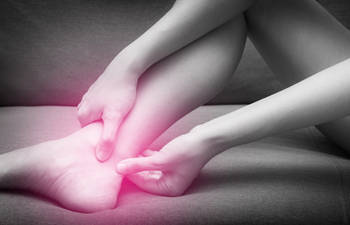
Achilles tendon rupture, a distressing injury affecting the tendon at the back of the ankle, can be debilitating and necessitate prompt attention. This critical tendon connects the calf muscles to the heel bone, facilitating movement like walking, running, and jumping. When subjected to excessive force or strain beyond its capacity, the Achilles tendon can tear partially or completely, resulting in a rupture. These types of injuries are frequently observed during activities involving sudden bursts of acceleration, abrupt changes in direction, or inadequate warm-up routines. Athletes, particularly those engaging in sports demanding rapid movements or high-impact activities, are at increased risk. Additionally, factors such as age weakened tendons due to degeneration, improper footwear, and inadequate conditioning contribute to susceptibility. Recognizing the signs and symptoms, including a sudden sharp pain in the heel, swelling, and difficulty walking or pointing toes downward, is vital for early diagnosis. If you have endured an Achilles tendon rupture, it is strongly suggested that you consult a podiatrist who can offer you effective treatment methods.
Achilles tendon injuries need immediate attention to avoid future complications. If you have any concerns, contact one of our podiatrists of The Podiatry Center, PC. Our doctors can provide the care you need to keep you pain-free and on your feet.
What Is the Achilles Tendon?
The Achilles tendon is a tendon that connects the lower leg muscles and calf to the heel of the foot. It is the strongest tendon in the human body and is essential for making movement possible. Because this tendon is such an integral part of the body, any injuries to it can create immense difficulties and should immediately be presented to a doctor.
What Are the Symptoms of an Achilles Tendon Injury?
There are various types of injuries that can affect the Achilles tendon. The two most common injuries are Achilles tendinitis and ruptures of the tendon.
Achilles Tendinitis Symptoms
- Inflammation
- Dull to severe pain
- Increased blood flow to the tendon
- Thickening of the tendon
Rupture Symptoms
- Extreme pain and swelling in the foot
- Total immobility
Treatment and Prevention
Achilles tendon injuries are diagnosed by a thorough physical evaluation, which can include an MRI. Treatment involves rest, physical therapy, and in some cases, surgery. However, various preventative measures can be taken to avoid these injuries, such as:
- Thorough stretching of the tendon before and after exercise
- Strengthening exercises like calf raises, squats, leg curls, leg extensions, leg raises, lunges, and leg presses
If you have any questions please feel free to contact our office located in Millburn, NJ . We offer the newest diagnostic tools and technology to treat your foot and ankle needs.
Heel Pain Can Be Treated!
Facts About Cuboid Syndrome
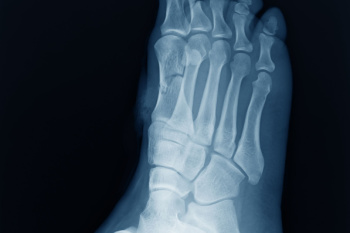
Cuboid syndrome, a lesser-known foot ailment, often eludes mainstream attention. However, its impact can be significant for those affected. This condition occurs when the cuboid bone, situated in the outer midfoot, becomes dislocated or irritated, leading to discomfort and limited mobility. Typically overlooked or misdiagnosed, Cuboid syndrome manifests through symptoms like pain along the outer foot, swelling, and difficulty in bearing weight. One of the perplexing aspects of cuboid syndrome is its elusive nature, often mimicking other foot conditions, complicating accurate diagnosis. It commonly arises from activities involving repetitive stress or sudden trauma to the foot, such as running, dancing, or jumping. Additionally, certain foot structures and gait abnormalities can predispose individuals to this syndrome. Despite its obscurity, recognizing the signs and seeking timely treatment is critical for managing cuboid syndrome effectively. If you have pain in this part of your foot, it is suggested that you consult a podiatrist who can accurately diagnose and treat cuboid syndrome.
Cuboid syndrome, also known as cuboid subluxation, occurs when the joints and ligaments near the cuboid bone in the foot become torn. If you have cuboid syndrome, consult with one of our podiatrists from The Podiatry Center, PC. Our doctors will assess your condition and provide you with quality foot and ankle treatment.
Cuboid syndrome is a common cause of lateral foot pain, which is pain on the outside of the foot. The condition may happen suddenly due to an ankle sprain, or it may develop slowly overtime from repetitive tension through the bone and surrounding structures.
Causes
The most common causes of cuboid syndrome include:
- Injury – The most common cause of this ailment is an ankle sprain.
- Repetitive Strain – Tension placed through the peroneus longus muscle from repetitive activities such as jumping and running may cause excessive traction on the bone causing it to sublux.
- Altered Foot Biomechanics – Most people suffering from cuboid subluxation have flat feet.
Symptoms
A common symptom of cuboid syndrome is pain along the outside of the foot which can be felt in the ankle and toes. This pain may create walking difficulties and may cause those with the condition to walk with a limp.
Diagnosis
Diagnosis of cuboid syndrome is often difficult, and it is often misdiagnosed. X-rays, MRIs and CT scans often fail to properly show the cuboid subluxation. Although there isn’t a specific test used to diagnose cuboid syndrome, your podiatrist will usually check if pain is felt while pressing firmly on the cuboid bone of your foot.
Treatment
Just as the range of causes varies widely, so do treatments. Some more common treatments are ice therapy, rest, exercise, taping, and orthotics.
If you have any questions, please feel free to contact our office located in Millburn, NJ . We offer the newest diagnostic and treatment technologies for all your foot care needs.
What is a Tailor’s Bunion?
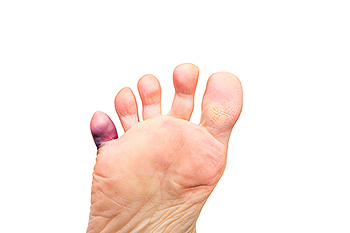
Tailor's bunions, also known as bunionettes, are bony protrusions that develop on the outside of the foot at the base of the little toe. Similar to traditional bunions, they can cause pain, inflammation, redness, and difficulty wearing certain shoes. Tailor's bunions are often caused by pressure and friction, leading to the misalignment of the fifth metatarsal bone and the little toe. The discomfort and limitations caused by tailor's bunions can significantly impact one's quality of life, especially in terms of footwear choices and mobility. Simple activities such as walking or standing can become painful and challenging. If you have such a bunion and it is causing severe pain, it is suggested that you make an appointment with a podiatrist for interventions that can help.
If you are suffering from bunion pain, contact one of our podiatrists of The Podiatry Center, PC. Our doctors can provide the care you need to keep you pain-free and on your feet.
What Is a Bunion?
Bunions are painful bony bumps that usually develop on the inside of the foot at the joint of the big toe. As the deformity increases over time, it may become painful to walk and wear shoes. Women are more likely to exacerbate existing bunions since they often wear tight, narrow shoes that shift their toes together. Bunion pain can be relieved by wearing wider shoes with enough room for the toes.
Causes
- Genetics – some people inherit feet that are more prone to bunion development
- Inflammatory Conditions - rheumatoid arthritis and polio may cause bunion development
Symptoms
- Redness and inflammation
- Pain and tenderness
- Callus or corns on the bump
- Restricted motion in the big toe
In order to diagnose your bunion, your podiatrist may ask about your medical history, symptoms, and general health. Your doctor might also order an x-ray to take a closer look at your feet. Nonsurgical treatment options include orthotics, padding, icing, changes in footwear, and medication. If nonsurgical treatments don’t alleviate your bunion pain, surgery may be necessary.
If you have any questions, please feel free to contact our office located in Millburn, NJ . We offer the newest diagnostic and treatment technologies for all your foot care needs.
Plantar Warts Can Be Treated!
Causes of Cold Feet and Poor Circulation
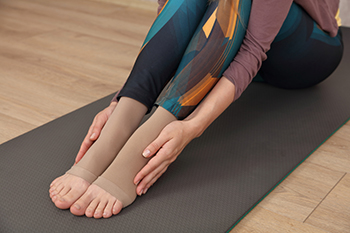 Cold feet can often signal poor circulation, a condition where blood flow to your extremities, especially the feet, is not adequate. There are several common causes of poor circulation in the feet. One is peripheral artery disease, where arteries narrow due to plaque buildup, reducing blood flow to your lower limbs. Diabetes can also contribute to poor circulation due to high blood sugar levels damaging blood vessels and nerves, leading to decreased sensation and blood flow. Additionally, conditions like Raynaud's disease cause blood vessels to narrow dramatically in response to cold or stress, further limiting blood flow. Smoking also worsens circulatory issues as it constricts blood vessels. It is important to get checked for any underlying health issues if you have circulatory issues in the feet and lower limbs. If you are experiencing cold feet on a regular basis, it is suggested that you consult a podiatrist, a foot doctor who can diagnose the source of the issue and offer treatment solutions for poor circulation.
Cold feet can often signal poor circulation, a condition where blood flow to your extremities, especially the feet, is not adequate. There are several common causes of poor circulation in the feet. One is peripheral artery disease, where arteries narrow due to plaque buildup, reducing blood flow to your lower limbs. Diabetes can also contribute to poor circulation due to high blood sugar levels damaging blood vessels and nerves, leading to decreased sensation and blood flow. Additionally, conditions like Raynaud's disease cause blood vessels to narrow dramatically in response to cold or stress, further limiting blood flow. Smoking also worsens circulatory issues as it constricts blood vessels. It is important to get checked for any underlying health issues if you have circulatory issues in the feet and lower limbs. If you are experiencing cold feet on a regular basis, it is suggested that you consult a podiatrist, a foot doctor who can diagnose the source of the issue and offer treatment solutions for poor circulation.
While poor circulation itself isn’t a condition; it is a symptom of another underlying health condition you may have. If you have any concerns with poor circulation in your feet contact one of our podiatrists of The Podiatry Center, PC. Our doctors will treat your foot and ankle needs.
Poor Circulation in the Feet
Peripheral artery disease (PAD) can potentially lead to poor circulation in the lower extremities. PAD is a condition that causes the blood vessels and arteries to narrow. In a linked condition called atherosclerosis, the arteries stiffen up due to a buildup of plaque in the arteries and blood vessels. These two conditions can cause a decrease in the amount of blood that flows to your extremities, therefore resulting in pain.
Symptoms
Some of the most common symptoms of poor circulation are:
- Numbness
- Tingling
- Throbbing or stinging pain in limbs
- Pain
- Muscle Cramps
Treatment for poor circulation often depends on the underlying condition that causes it. Methods for treatment may include insulin for diabetes, special exercise programs, surgery for varicose veins, or compression socks for swollen legs.
As always, see a podiatrist as he or she will assist in finding a regimen that suits you. A podiatrist can also prescribe you any needed medication.
If you have any questions, please feel free to contact our office located in Millburn, NJ . We offer the newest diagnostic and treatment technologies for all your foot care needs.
Lower Extremity Injuries From Skateboarding

Skateboarding poses risks, especially for lower extremity injuries. Fractures, strains, and ankle sprains are common. These injuries can be debilitating, affecting mobility and causing long-term issues. Regardless of age or gender, skateboarders face these risks. Surprisingly, adults over 25 years old are increasingly prone to such injuries. Ankle sprains and fractures are prevalent due to falls or awkward landings. Proper diagnosis and treatment are essential, sometimes requiring surgery for severe cases. To minimize lower extremity injuries, warm up before skating, stretch, and wear protective gear like knee pads and ankle braces. Practicing on safe surfaces and avoiding high-risk areas can also help. Taking precautions and caring for lower extremities is essential for preventing serious skateboarding injuries and enjoying the sport safely. If you have sustained a foot or ankle skateboard injury, it is suggested that you make an appointment with a podiatrist for a proper diagnosis and treatment.
Ankle and foot injuries are common among athletes and in many sports. They can be caused by several problems and may be potentially serious. If you are feeling pain or think you were injured in a sporting event or when exercising, consult with one of our podiatrists from The Podiatry Center, PC. Our doctors will assess your condition and provide you with quality foot and ankle treatment.
Common Injuries
The most common injuries that occur in sporting activities include:
- Achilles Tendonitis
- Achilles Tendon Rupture
- Ankle Sprains
- Broken Foot
- Plantar Fasciitis
- Stress Fractures
- Turf Toe
Symptoms
Symptoms vary depending upon the injury and in some cases, there may be no symptoms at all. However, in most cases, some form of symptom is experienced. Pain, aching, burning, bruising, tenderness, tightness or stiffness, sensation loss, difficulty moving, and swelling are the most common symptoms.
Treatment
Just as symptoms vary depending upon the injury, so do treatment options. A common treatment method is known as the RICE method. This method involves rest, applying ice, compression and elevating the afflicted foot or ankle. If the injury appears to be more serious, surgery might be required, such as arthroscopic or reconstructive surgery. Lastly, rehabilitation or therapy might be needed to gain full functionality in the afflicted area. Any discomfort experienced by an athlete must be evaluated by a licensed, reputable medical professional.
If you have any questions, please feel free to contact our office located in Millburn, NJ . We offer the newest diagnostic and treatment technologies for all your foot care needs.
Arthritis Can Cause Pain in the Feet and Ankles
More...
Sever’s Disease and How to Find Relief

Sever’s disease, a common cause of heel pain in children, happens due to overuse. It is caused by repetitive strain on the heel bone's growth plate from the calf muscles pulling on the Achilles tendon. Risk factors can include flat feet, having tight muscles, running on hard surfaces, and wearing shoes that do not fit well. It typically occurs during bone growth years, between the ages of 7 to 15 years. Symptoms can include heel tenderness, tight calf muscles, and pain during activity. Diagnosis is based on history and examination, with some cases needing an MRI. Wearing custom-made orthotics and heel lifts may help patients to find relief, while severe cases may need a cast or boot. Complications are rare, and most patients recover in a few weeks to months, with a return to sports in two to eight weeks. If your child has heel pain, it is suggested that you schedule an appointment with a podiatrist for an accurate diagnosis and appropriate treatment.
Sever's disease often occurs in children and teens. If your child is experiencing foot or ankle pain, see one of our podiatrists from The Podiatry Center, PC. Our doctors can treat your child’s foot and ankle needs.
Sever’s Disease
Sever’s disease is also known as calcaneal apophysitis, which is a medical condition that causes heel pain I none or both feet. The disease is known to affect children between the ages of 8 and 14.
Sever’s disease occurs when part of the child’s heel known as the growth plate (calcaneal epiphysis) is attached to the Achilles tendon. This area can suffer injury when the muscles and tendons of the growing foot do not keep pace with bone growth. Therefore, the constant pain which one experiences at the back of the heel will make the child unable to put any weight on the heel. The child is then forced to walk on their toes.
Symptoms
Acute pain – Pain associated with Sever’s disease is usually felt in the heel when the child engages in physical activity such as walking, jumping and or running.
Highly active – Children who are very active are among the most susceptible in experiencing Sever’s disease, because of the stress and tension placed on their feet.
If you have any questions, please feel free to contact our office located in Millburn, NJ . We offer the newest diagnostic and treatment technologies for all your foot and ankle injuries.
What Causes Toe Pain
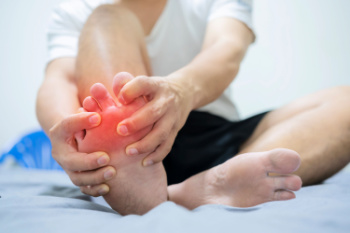 Toe pain can significantly disrupt day to day activities, so it is important to gain clarity on the source of the pain to get proper treatment. One common reason for toe pain is wearing improper footwear. Shoes that are too tight or narrow lead to pressure and discomfort on the toes. If there is pain surrounding the edge of the toenail, a potential cause of the pain is an ingrown toenail. Athletes may experience toe pain due to repetitive stress or strain on the feet during sports activities. Conditions like bunions or hammertoes, where the bones or joints in the toes become misaligned, can also cause significant discomfort. Sudden and severe pain in the big toe joint can be a symptom of gout. There are also other possible causes of toe pain. If you are experiencing persistent toe pain, it is suggested you schedule an appointment with a podiatrist who can identify the source and offer correct treatment methods.
Toe pain can significantly disrupt day to day activities, so it is important to gain clarity on the source of the pain to get proper treatment. One common reason for toe pain is wearing improper footwear. Shoes that are too tight or narrow lead to pressure and discomfort on the toes. If there is pain surrounding the edge of the toenail, a potential cause of the pain is an ingrown toenail. Athletes may experience toe pain due to repetitive stress or strain on the feet during sports activities. Conditions like bunions or hammertoes, where the bones or joints in the toes become misaligned, can also cause significant discomfort. Sudden and severe pain in the big toe joint can be a symptom of gout. There are also other possible causes of toe pain. If you are experiencing persistent toe pain, it is suggested you schedule an appointment with a podiatrist who can identify the source and offer correct treatment methods.
Toe pain can disrupt your daily activities. If you have any concerns, contact one of our podiatrists of The Podiatry Center, PC. Our doctors can provide the care you need to keep you pain-free and on your feet.
What Causes Toe Pain?
Most severe toe pain is caused due to a sports injury, trauma from dropping something heavy on the toe, or bumping into something rigid. Other problems can develop over time for various reasons.
Toe pain can be caused by one or more ailments. The most common include:
- Trauma
- Sports injury
- Wearing shoes that are too tight
- Arthritis
- Gout
- Corns and calluses
- Hammertoe
- Bunions
- Blisters
- Ingrown toenails
- Sprains
- Fractures (broken bones)
- Dislocations
When to See a Podiatrist
- Severe pain
- Persistent pain that lasts more than a week
- Signs of infection
- Continued swelling
- Pain that prevents walking
Diagnosis
In many cases the cause of toe pain is obvious, but in others, a podiatrist may want to use more advanced methods to determine the problem. These can range from simple visual inspections and sensation tests to X-rays and MRI scans. Prior medical history, family medical history, and any recent physical traumatic events will all be taken into consideration for a proper diagnosis.
Treatment
Treatments for toe pain and injuries vary and may include shoe inserts, padding, taping, medicines, injections, and in some cases, surgery. If you believe that you have broken a toe, please see a podiatrist as soon as possible.
If you have any questions please feel free to contact our office located in Millburn, NJ . We offer the newest diagnostic tools and technology to treat your foot and ankle needs.
Gout Pain Can Be Managed
Past, Present, and Future of Diabetic Foot Ulcer Treatment
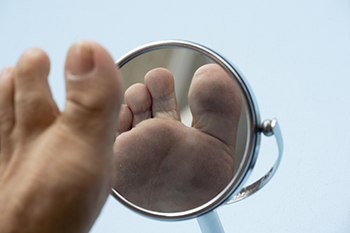
The surge in global diabetes has led to a rise in diabetic foot ulcers, posing significant health challenges. In the mid-19th century, Marchal de Calvi and Thomas Hodgkin identified the link between diabetes and foot gangrene, paving the way for pioneering treatments like Frederick Treves' sharp debridement method. Treves emphasized pressure relief and patient education. The discovery of insulin in the 20th century improved diabetic patients' lives but also increased foot disease cases. Elliot Joslin established the first foot clinic in 1928, advocating a multidisciplinary approach. Penicillin's discovery in 1928 revolutionized infection treatment, reducing amputation rates. Revascularization techniques and limb salvage became critical, with Frank Wheelock pioneering bypass grafts. Topical negative pressure therapy emerged in the 1990s, aiding wound healing. Despite advancements, chronic diabetic ulcers remain a challenge, with ongoing research for new treatments. Current treatment involves a multidisciplinary approach, controlling diabetes, and utilizing various wound care methods. Challenges persist, underscoring the importance of diabetics scheduling routine appointments with a podiatrist for foot examinations and specialized care.
Wound care is an important part in dealing with diabetes. If you have diabetes and a foot wound or would like more information about wound care for diabetics, consult with one of our podiatrists from The Podiatry Center, PC. Our doctors will assess your condition and provide you with quality foot and ankle treatment.
What Is Wound Care?
Wound care is the practice of taking proper care of a wound. This can range from the smallest to the largest of wounds. While everyone can benefit from proper wound care, it is much more important for diabetics. Diabetics often suffer from poor blood circulation which causes wounds to heal much slower than they would in a non-diabetic.
What Is the Importance of Wound Care?
While it may not seem apparent with small ulcers on the foot, for diabetics, any size ulcer can become infected. Diabetics often also suffer from neuropathy, or nerve loss. This means they might not even feel when they have an ulcer on their foot. If the wound becomes severely infected, amputation may be necessary. Therefore, it is of the upmost importance to properly care for any and all foot wounds.
How to Care for Wounds
The best way to care for foot wounds is to prevent them. For diabetics, this means daily inspections of the feet for any signs of abnormalities or ulcers. It is also recommended to see a podiatrist several times a year for a foot inspection. If you do have an ulcer, run the wound under water to clear dirt from the wound; then apply antibiotic ointment to the wound and cover with a bandage. Bandages should be changed daily and keeping pressure off the wound is smart. It is advised to see a podiatrist, who can keep an eye on it.
If you have any questions, please feel free to contact our office located in Millburn, NJ . We offer the newest diagnostic and treatment technologies for all your foot care needs.





